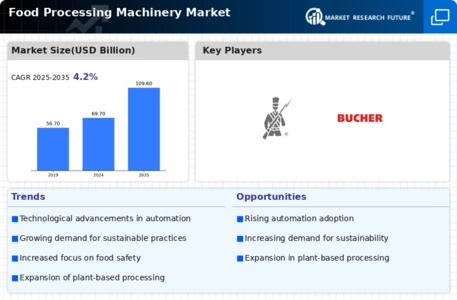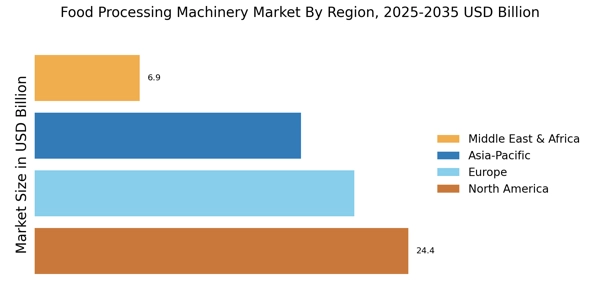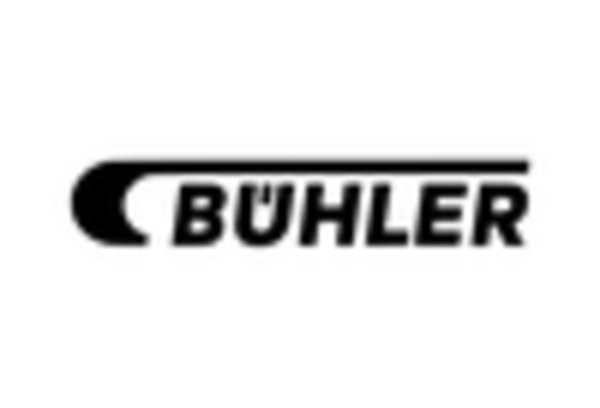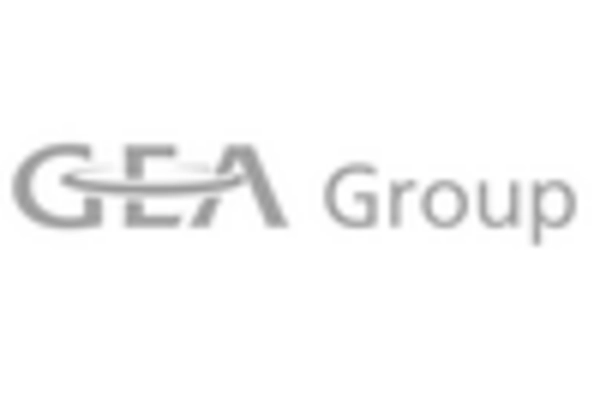Food Processing Machinery Market Summary
As per MRFR analysis, the Food Processing Machinery Market was estimated at 69.7 USD Billion in 2024. The food processing machinery industry is projected to grow from 72.62 USD Billion in 2025 to 109.61 USD Billion by 2035, exhibiting a compound annual growth rate (CAGR) of 4.2 during the forecast period 2025 - 2035.
Key Market Trends & Highlights
The Food Processing Machinery Market is experiencing robust growth driven by technological advancements and evolving consumer preferences.
- Automation and smart technology are increasingly being integrated into food processing machinery, enhancing efficiency and productivity.
- Sustainability initiatives are gaining traction, with manufacturers focusing on eco-friendly practices and materials in their machinery.
- Customization and specialization are becoming essential as food producers seek tailored solutions to meet diverse consumer demands.
- The rising demand for processed foods and the expansion of the food and beverage industry are key drivers propelling market growth, particularly in North America and the Asia-Pacific region.
Market Size & Forecast
| 2024 Market Size | 69.7 (USD Billion) |
| 2035 Market Size | 109.61 (USD Billion) |
| CAGR (2025 - 2035) | 4.2% |
Major Players
Buhler AG (CH), Marel (IS), Tetra Pak (SE), GEA Group (DE), Alfa Laval (SE), SPX FLOW (US), JBT Corporation (US), Heat and Control (US), Baldor Electric Company (US)


















Leave a Comment